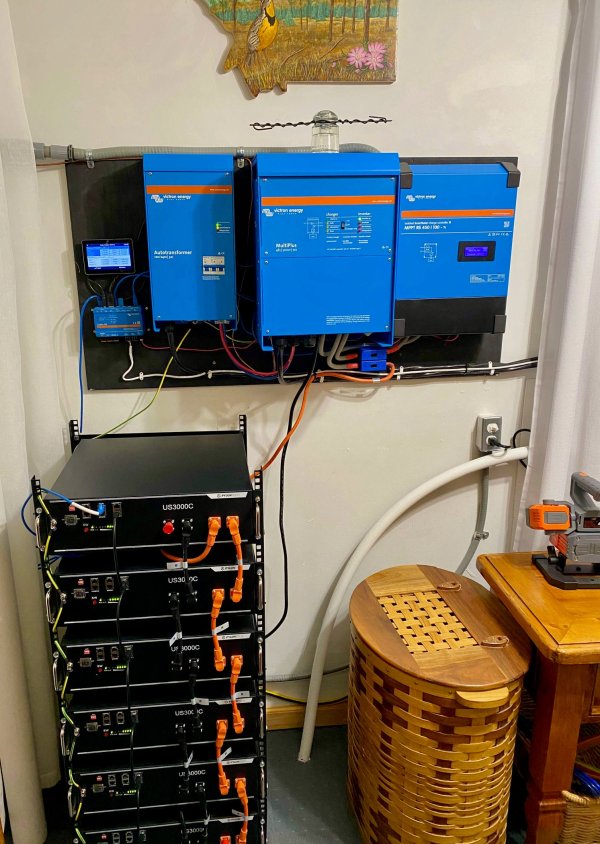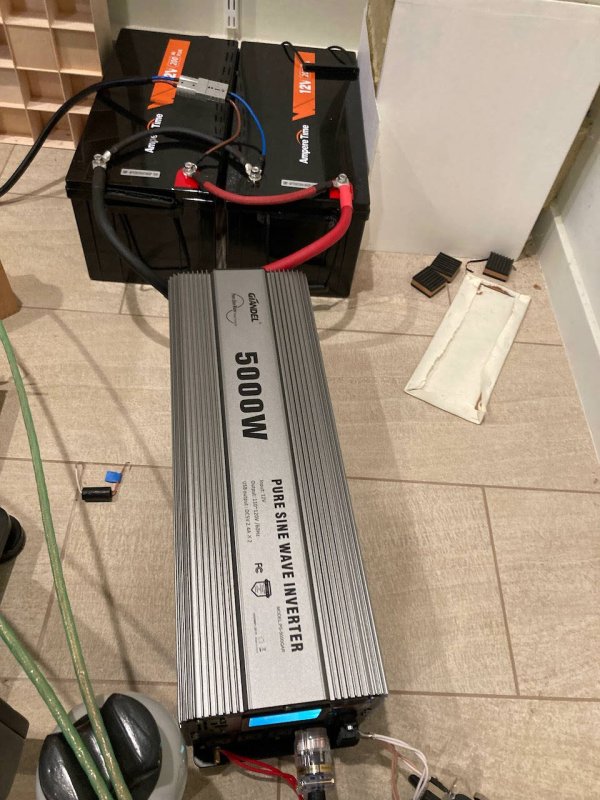Great feedback acg.@Kingrex
I have a Victron off-grid battery based system with solar charging. It is setup for the entire office, which just happens to be where the system also resides. It is certainly better sounding during the day even when solar charging is concurrently occuring, when compared to running off the grid power, but is better at night when the sun is below the horizon. Our grid here in Australia is likely much more consisent than in the US.
There is a huge balanced isolation transformer not yet connected to the circuit which I expect will reduce or eliminate the sound disparity that occius when the sun is out. Others experience with this custom transformer has been transformative (pun intended). It uses inductive and capacitive filtering post the transformer to further attenuate any noise, and I would not be surprised if it also improves sound at night.
LiFePO4 batteries 19.2kW @ 80% DOD
9.36kW solar, mostly using microinverters
Victron 48/10000 10kW inverter
Completely off-grid
When balanced isolation transformer is connected a separate earthing rod will also be connected.
System is mostly tubes and horns and draws a consistent almost 2kW mainly due to the pair of six channel SET amps that (of course) run in Class A, not to mention the tube dac, tube phono, DHT preamp and all the other solid-state electronics. On work days the off-grid system also runs six computers and the air-conditioning.
It's now been raining here for two days straight and the system is down to about 60% battery remaining. There have been a few patches of sunlight but not many, and the audio system runs about 15 hours every day.
Couple questions if I may.
Currently, do you have any filters at the wall feeding the audio equipment. A Shunyata or Puritan or anything.
How far is the inverter from the room it serves.
Did you ground the inverter frame as well as the battery negstive terminal.
I assume you have 5 x 100 AH batteries. Are they rack mount. Victron? What brand.
Your 230 volt 50 hert. So about 40A output from the inverter.
Do you have a dedicated panel to provide branch circuit protection.
Did you go through a RCB and all the normal overcurrent protection?. In other words, is the panel from the inverter feeding the room the same as the panel feeding circuits to the room from utility power.
Did you do anything special for the branch wires from the inverter to the room like oversizing them? Again, are they the same as what wires are coming from the utility power?
Or, by utility power, do you mean the utility passes through the Victron to the room and your using software to tell the inverter to disconnect from the utility and only use the battery when listening.
Thanks
Rex



